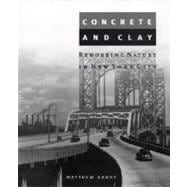
Note: Supplemental materials are not guaranteed with Rental or Used book purchases.
Purchase Benefits
What is included with this book?
| Preface | p. ix |
| Introduction | p. 1 |
| Water, Space, and Power | p. 19 |
| Water and the Nascent Civic Realm | p. 24 |
| Engineering the Technological Sublime | p. 32 |
| Urban Decay and the Hidden City | p. 52 |
| Paranoid Urbanism | p. 60 |
| Hydrological Transformations | p. 70 |
| Symbolic Order and the Urban Pastoral | p. 77 |
| Cultural Anxiety, Land Speculation, and Public Space | p. 81 |
| Creating the Garden of a Great City | p. 87 |
| Olmsted's Urban Vision: A Fragile Synthesis | p. 97 |
| Olmsted Rediscovered: An Emerging Preservationist Ethic | p. 102 |
| Emerald Dreams | p. 109 |
| Technological Modernism and the Urban Parkway | p. 115 |
| The Automobilization of the American Landscape | p. 118 |
| Robert Moses and the Radiant City | p. 126 |
| The Demise of Technological Modernism | p. 138 |
| Fractured Cities | p. 147 |
| Between Borinquen and the Barrio | p. 153 |
| Landscapes of Despair | p. 156 |
| Space, Identity, and Power | p. 162 |
| Disarray in the 1970s | p. 177 |
| The Power of Memory | p. 182 |
| Rustbelt Ecology | p. 187 |
| Across the Great Divide | p. 193 |
| Pollution and the Politics of Resistance | p. 200 |
| Reclaiming the Social Environment | p. 213 |
| Trash Can Utopias | p. 221 |
| Epilogue | p. 229 |
| Notes | p. 235 |
| Index | p. 327 |
| Table of Contents provided by Ingram. All Rights Reserved. |
The New copy of this book will include any supplemental materials advertised. Please check the title of the book to determine if it should include any access cards, study guides, lab manuals, CDs, etc.
The Used, Rental and eBook copies of this book are not guaranteed to include any supplemental materials. Typically, only the book itself is included. This is true even if the title states it includes any access cards, study guides, lab manuals, CDs, etc.